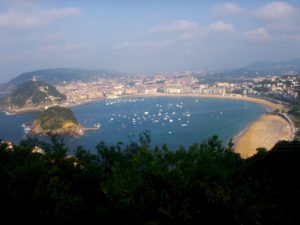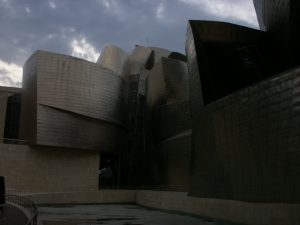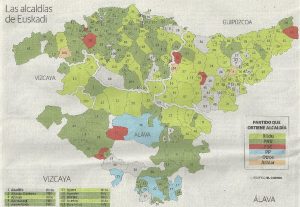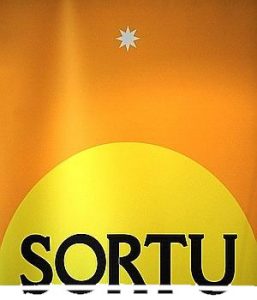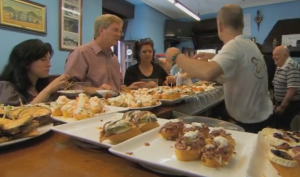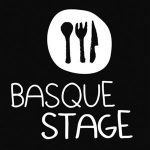Nor Naiz, Gu Gara (Who I Am, We Are) is a series aiming to explore the meaning of Basque Identity around the world, both within Euskal Herria as well as in the diaspora. For an introduction to the series, look here, and for a list of the previous entries, look here.

What a pleasure to appear on Buber’s Basque Pages! Throughout my career at the Center for Basque Studies, I have experienced the Basque community from the privileged position of “welcome guest.” Genetically, I am not Basque. I certainly do not look Basque. People meet me here and in the Basque country and ask, “Why have you studied the language? How did you come to spend your life studying the Basques, their language, and their culture?”
The role of Basque friends and professors in my life has been a huge motivator. In college, the late Professor Eloy Placer intrigued me by speaking Basque in the halls of the humanities building. He loved and encouraged his students, tolerating our faulty Spanish, laughing with us at his own silly jokes, and giving us second (and third) chances to understand the material he was trying to impart about Spanish literature. I find it amusing and ironic that my love of Spanish literature was instilled in me by a Basque professor. But he also inspired a curiosity about the Basque language.
My first Basque class was a night class with the late Jon Bilbao. We used the tiny pocketbook, Euskera, Nire Laguna, and we thoroughly enjoyed ourselves. Did we learn much Euskera? Not really. But as a language teacher, I know that one night a week does not bode well for progress in a language. What we did learn was that the attempt to learn Basque, in and of itself, imparts a special camaraderie to a group of people who had been strangers before coming together in that setting.
After joining the staff of Basque Studies in 1981, I studied on my own for six months. Dr. Gorka Aulestia noticed my interest and my dedication, and he offered me Basque lessons! I jumped at the chance. We met two mornings a week before work in our own private classes, while I went home every weekend and spent twenty hours preparing for the next week’s lessons.
“Oh, no,” I hear you groan. “Twenty hours a week to learn Basque?! I don’t have that much time!”
Of course not. Learning Basque was my passion, but it was also encouraged by my employers, and admired by my growing group of Basque friends. My college degrees were in foreign language and literature. My job title soon became “Lexicographer” as I assisted Dr. Aulestia with the Basque-English dictionary.
But as David Cox explained in his entry for this column, you don’t have to be fluent to warm the hearts of the generous Basque people. Nowhere have I seen greater rewards for one’s earliest steps toward learning a language. Communicating in Euskara at a very low level is like wielding a key to the kingdom of Basqueness. But even if you despair of ever producing a full coherent sentence in Euskara, studying the language provides an insight into the way Euskara shapes the thinking and world outlook of those who do speak Euskara.
As someone who has always felt warmly welcomed by the Basque-American community, I can report that any and every effort to respect Basque history and culture through learning something about the language is well worth while. It was in this spirit that I spent the last several years completing my textbooks for studying Basque, either at home or in a classroom. Dialogs and pronunciation guides are available on-line as MP3 files for downloading. Answers to exercises are provided in the books.
Those who might be interested can visit www.studybasque.com for more info on Dr. White’s two-volume textbook Aurrera! A Textbook for Studying Basque, along with vocabulary study tips.
Share this / Partekatu hau:
Like this:
Like Loading...
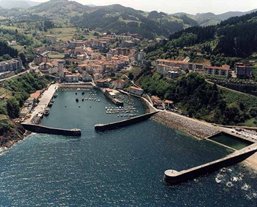 A very interesting development from the Basque Country. With all of the concerns related to climate change and dependence on foreign oil, people are looking for new ways to extract energy from where ever possible. The Basque Country is known for its waves — just ask any surfing aficionado. And while not as famous as nearby Mundaka for surfing, Mutriku is still valued for its waves.
A very interesting development from the Basque Country. With all of the concerns related to climate change and dependence on foreign oil, people are looking for new ways to extract energy from where ever possible. The Basque Country is known for its waves — just ask any surfing aficionado. And while not as famous as nearby Mundaka for surfing, Mutriku is still valued for its waves.

